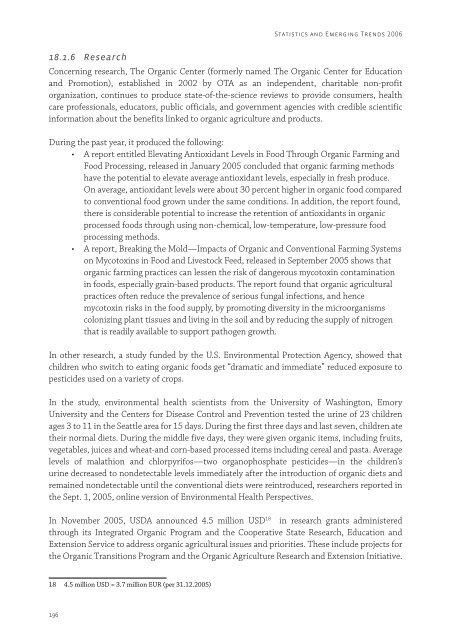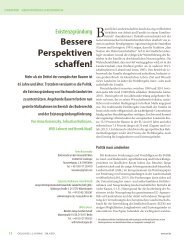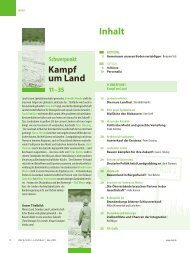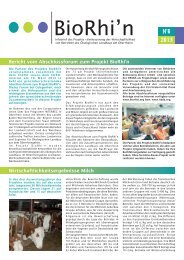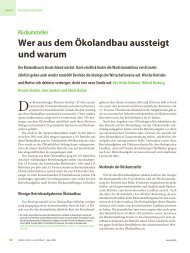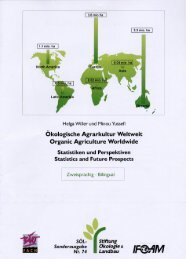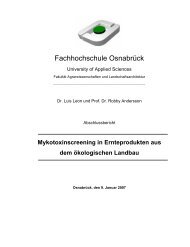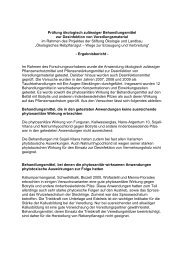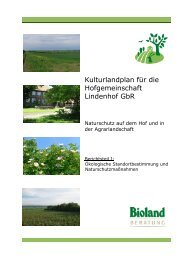the world of organic agriculture - Organic Eprints
the world of organic agriculture - Organic Eprints
the world of organic agriculture - Organic Eprints
Create successful ePaper yourself
Turn your PDF publications into a flip-book with our unique Google optimized e-Paper software.
18.1.6 Research<br />
196<br />
Statistics and Emerging Trends 2006<br />
Concerning research, The <strong>Organic</strong> Center (formerly named The <strong>Organic</strong> Center for Education<br />
and Promotion), established in 2002 by OTA as an independent, charitable non-pr<strong>of</strong>it<br />
organization, continues to produce state-<strong>of</strong>-<strong>the</strong>-science reviews to provide consumers, health<br />
care pr<strong>of</strong>essionals, educators, public <strong>of</strong>ficials, and government agencies with credible scientific<br />
information about <strong>the</strong> benefits linked to <strong>organic</strong> <strong>agriculture</strong> and products.<br />
During <strong>the</strong> past year, it produced <strong>the</strong> following:<br />
• A report entitled Elevating Antioxidant Levels in Food Through <strong>Organic</strong> Farming and<br />
Food Processing, released in January 2005 concluded that <strong>organic</strong> farming methods<br />
have <strong>the</strong> potential to elevate average antioxidant levels, especially in fresh produce.<br />
On average, antioxidant levels were about 30 percent higher in <strong>organic</strong> food compared<br />
to conventional food grown under <strong>the</strong> same conditions. In addition, <strong>the</strong> report found,<br />
<strong>the</strong>re is considerable potential to increase <strong>the</strong> retention <strong>of</strong> antioxidants in <strong>organic</strong><br />
processed foods through using non-chemical, low-temperature, low-pressure food<br />
processing methods.<br />
• A report, Breaking <strong>the</strong> Mold—Impacts <strong>of</strong> <strong>Organic</strong> and Conventional Farming Systems<br />
on Mycotoxins in Food and Livestock Feed, released in September 2005 shows that<br />
<strong>organic</strong> farming practices can lessen <strong>the</strong> risk <strong>of</strong> dangerous mycotoxin contamination<br />
in foods, especially grain-based products. The report found that <strong>organic</strong> agricultural<br />
practices <strong>of</strong>ten reduce <strong>the</strong> prevalence <strong>of</strong> serious fungal infections, and hence<br />
mycotoxin risks in <strong>the</strong> food supply, by promoting diversity in <strong>the</strong> microorganisms<br />
colonizing plant tissues and living in <strong>the</strong> soil and by reducing <strong>the</strong> supply <strong>of</strong> nitrogen<br />
that is readily available to support pathogen growth.<br />
In o<strong>the</strong>r research, a study funded by <strong>the</strong> U.S. Environmental Protection Agency, showed that<br />
children who switch to eating <strong>organic</strong> foods get “dramatic and immediate” reduced exposure to<br />
pesticides used on a variety <strong>of</strong> crops.<br />
In <strong>the</strong> study, environmental health scientists from <strong>the</strong> University <strong>of</strong> Washington, Emory<br />
University and <strong>the</strong> Centers for Disease Control and Prevention tested <strong>the</strong> urine <strong>of</strong> 23 children<br />
ages 3 to 11 in <strong>the</strong> Seattle area for 15 days. During <strong>the</strong> first three days and last seven, children ate<br />
<strong>the</strong>ir normal diets. During <strong>the</strong> middle five days, <strong>the</strong>y were given <strong>organic</strong> items, including fruits,<br />
vegetables, juices and wheat-and corn-based processed items including cereal and pasta. Average<br />
levels <strong>of</strong> malathion and chlorpyrifos—two organophosphate pesticides—in <strong>the</strong> children’s<br />
urine decreased to nondetectable levels immediately after <strong>the</strong> introduction <strong>of</strong> <strong>organic</strong> diets and<br />
remained nondetectable until <strong>the</strong> conventional diets were reintroduced, researchers reported in<br />
<strong>the</strong> Sept. 1, 2005, online version <strong>of</strong> Environmental Health Perspectives.<br />
In November 2005, USDA announced 4.5 million USD 18 in research grants administered<br />
through its Integrated <strong>Organic</strong> Program and <strong>the</strong> Cooperative State Research, Education and<br />
Extension Service to address <strong>organic</strong> agricultural issues and priorities. These include projects for<br />
<strong>the</strong> <strong>Organic</strong> Transitions Program and <strong>the</strong> <strong>Organic</strong> Agriculture Research and Extension Initiative.<br />
18 4.5 million USD = 3.7 million EUR (per 31.12.2005)


